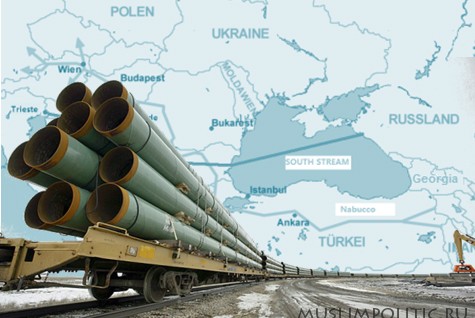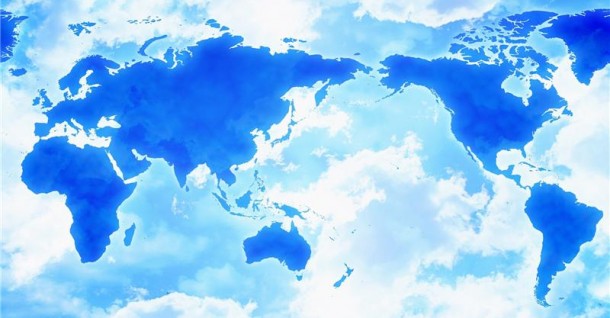It is much written and told about Islam in Europe and North America, as well as about an experience of its followers and their intensive development at the present stage. There is much less information about Russia, though. Also, there are a very few attempts to compare the development processes of Russian Muslim minority with what is happening in other regions of the world.
Russia, in terms of relationships with its internal Muslim community (which, according to a statement by the Russian President Vladimir Putin, reaches about 20 million people), should not be compared with Europe, as is often done, but most likely with Asia. To be more precise, with Asian states, where significant Islamic minorities reside. This is the first. Secondly, the experience of coexisting of Muslims and representatives of other religions in Russia cannot be considered as unique. Yes, it is interesting, but not unique, despite the statements of the Russian officials in this regard. In general, this is the same experience as it is in non-Muslim Asian countries with significant indigenous Muslim population.
Some of this type of states (let us call them nominally «Asian») once were Muslim in the past. The history of their relationships with the Islam followers knows almost everything: war and friendship, hatred and integration, apathy and desire to know each other. Today these countries, including Russia, are trying to build a policy towards Islam. From this point, the differences between them and Russia appear. As for Russia, the country may fall out of the members of the «Asian» colleagues club in the future. The only question is where the Russian Federation will find itself.
“Asian” type of Muslim minorities
Today the experience of European, generally Western, Muslim minorities, despite their short history, appears much more explored than the similar processes in Asia. The reason is clear – what is happening in the “world’s center” excites experts much more than other.
Nevertheless, it is also extremely important to know, how Islam existed and exists in such countries like China, India, Thailand, Philippines, Sri Lanka, and to some extent in Myanmar and Vietnam. Moreover, it seems that the European countries like Bulgaria, Greece, Serbia, Macedonia, Montenegro, Ukraine, Poland, Belarus, Romania and Lithuania are also to be concerned to same type of states, though with some exceptions. This approach is very important to unveil the situation of Muslim minority in Russia, because in respect of Islam Moscow has much in common with these countries. This makes us to place Russia among the «Asian» type of states in the context of relationship with Muslim minorities.
- As in Russia, Islam is the traditional and historically rooted religion in China, India, etc. Muslims from these countries are indigenous population – not migrants or their descendants as they are in Europe (in general in the EU). Islam exists there for many centuries, but nowhere enjoys de facto equal rights and status in comparison with confession or ideology to which the majority belongs.
- Muslim minorities have various intensity of problems (discrimination, oppression of religious and political rights, separatism, extremism, concealing of the historical role and contribution, etc.) with the governments in all these countries.
- The «hidden history» of Islam is everywhere. In other words, Islam and Muslims played much more important and positive role in the history of these countries than it is officially accepted due to the dominating culture, historical and political mythology. Hence, the problem of ban of Muslims from influence on major national processes that cause the alienation of Muslim masses follows.
- The problem of Muslim minorities has dual character in each of these countries. On the one hand, there is generally a loyal and more or less integrated community. On the other hand, there is a part of the followers of Islam, who are in harsh conflict (including armed) with their countries.
This is very important and remarkable for Russia, where, on the one hand, there is a community of Muslims of the Volga-Urals region, and on the other hand – the destabilized North Caucasus. Similarly, Hui people of China are quite included in the Chinese statehood, but the Xinjiang Uygur Autonomous region is troubled. The same is true for India’s Kashmir, on the one hand, and more than hundreds of millions of Muslims living in other regions of the country. Thailand and the Philippines: long-term armed conflict in the South amid the presence of Muslims in the center of the country. Moreover, there are very high-ranking Muslim officials among them, including military officials.
Everywhere in these countries, the conflicts have irreligious nature. There is a problem of political and territorial separatism for one part of Muslims and disagreement with such downgraded position for another part. These conflicts are deeply rooted in history, and not always the resistance went under slogans of Islam.
- In all these countries, Muslims are a kind of «younger brothers» and, de facto, do not have equal status with the majority (de jure, this is allowed). Such political status is mainly caused by the fact that their ancestors suffered historical defeat in the past.
Having similarities with Asian counterparts, one might say that Russia stands out among «Asian» type countries with better conditions for Islam and its followers. The Russian Federation is, broadly speaking, the best state of «Asian» type of relationship with Muslim minorities.
Metamorphosis
Changes in the Russian Federation and the developments for the last 15-20 years affected Muslims directly. Large-scale of migration processes changes the country in terms of Islam from the best «Asian» state into the most problematic «European». In other words, with a growing number of Muslims, who come from the former periphery of the Russian Empire, the attitude to Islam in Russia increasingly resemble the «European» type, when the Muslim community is mostly represented by newcomers or their second-and-third-generation descendants.
The centuries-old «Asian» identity of Islam in Russia promptly changes. Currently, Russia takes the second place in the world in terms of absolute volume of immigration, coming the second after the USA. According to the official data, 8,4 million immigrants arrived in the country in 1992-2010; the informal statistics is more realistic – 15-18 million people that takes 10,5-12,7% of the whole country’s population. According to the data for 2012, 91% of all migration’s gain fall on the CIS countries, thereof 63,5% are representatives of mainly Muslim states (Azerbaijan, Tajikistan, Kyrgyzstan, Uzbekistan, Kazakhstan and Turkmenistan).
In this regard, Russia more and more reminds Europe, where problems concerning Islam and migration are flew together. However, there is a difference. The situation is much worse in Russia since the country is not ready for this kind of transformations; and even worse, the country does not want to prepare itself seriously yet.
I think it is already possible to say that in the XXI century Russia will not be a country of «Asian-Muslim» type, which it has always been in the history. Russians are becoming «Europeans», though not by those indicators (pluralistic democracy, competitive economy, independent court and media) that are preferable to many people.
Abdullah Rinat Mukhametov, Phd, political analyst, Deputy Director of the «Altair Foundation» (Moscow, Russia)
Muslim Politic
![Электронный журнал [Электронный журнал]](/magazine.static/magazine-front.jpg)


